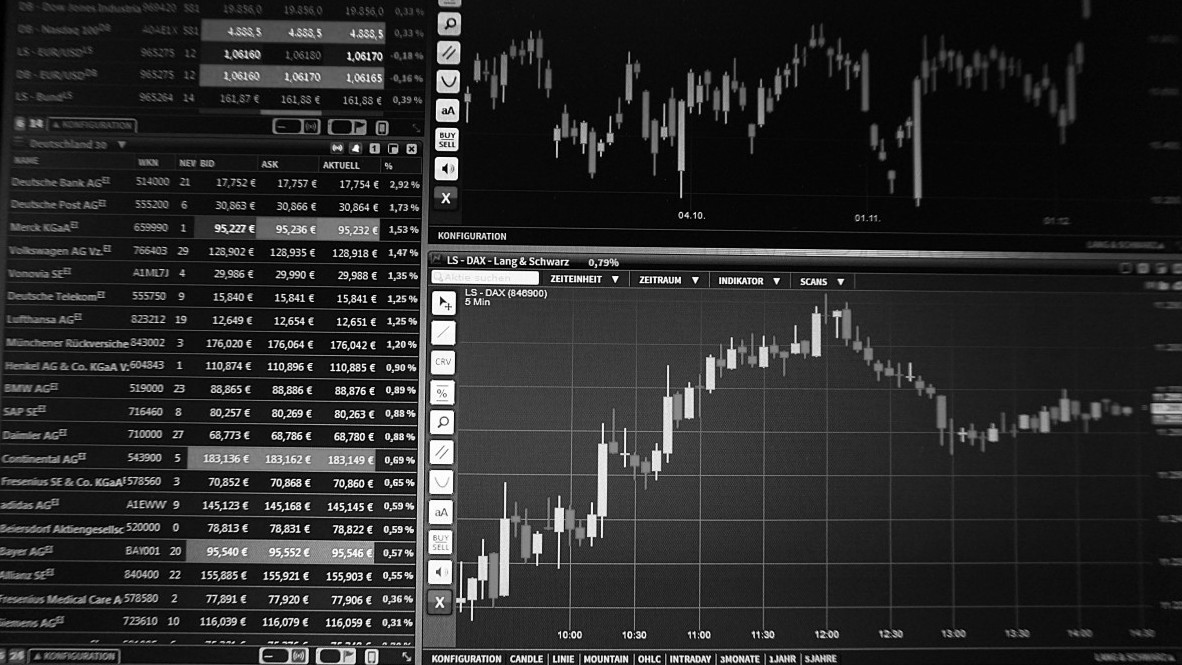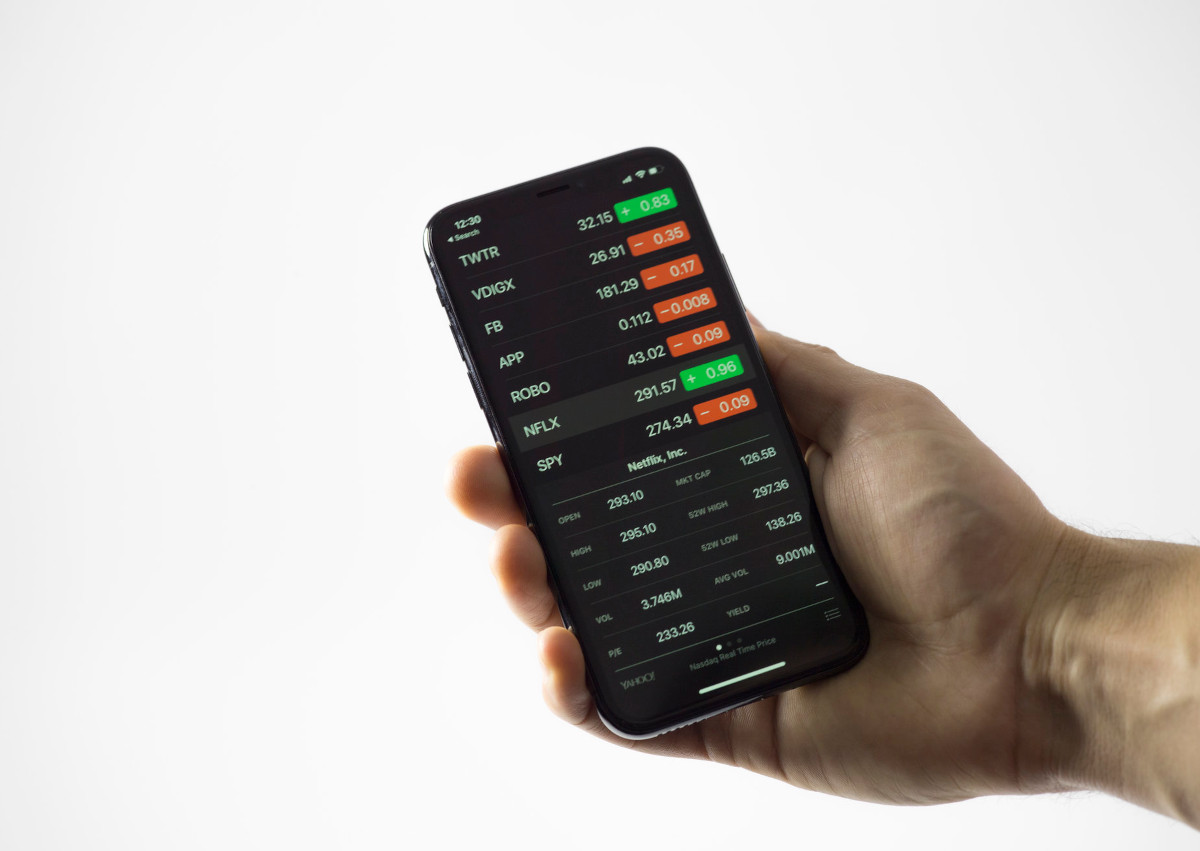(VIANEWS) – eBay (EBAY), The Carlyle Group (CG), Smith & Wesson (SWBI) are the highest payout ratio stocks on this list.
We have congregated information regarding stocks with the highest payout ratio so far. The payout ratio in itself isn’t a guarantee of good investment but it’s an indicator of whether dividends are being paid and how the company chooses to issue them.
When researching a potential investment, the dividend payout ratio is a good statistic to know so here are a few stocks with an above 30% percent payout ratio.
1. eBay (EBAY)
86.67% Payout Ratio
eBay Inc. operates marketplace platforms that connect buyers and sellers in the United States and internationally. The company's marketplace platform includes its online marketplace at ebay.com and the eBay suite of mobile apps. Its platforms enable users to list, buy, and sell various products. The company was founded in 1995 and is headquartered in San Jose, California.
Earnings Per Share
As for profitability, eBay has a trailing twelve months EPS of $1.05.
PE Ratio
eBay has a trailing twelve months price to earnings ratio of 42.2. Meaning, the purchaser of the share is investing $42.2 for every dollar of annual earnings.
The company’s return on equity, which measures the profitability of a business relative to shareholder’s equity, for the twelve trailing months is 10.19%.
2. The Carlyle Group (CG)
63.11% Payout Ratio
The Carlyle Group Inc. is an investment firm specializing in direct and fund of fund investments. Within direct investments, it specializes in management-led/ Leveraged buyouts, privatizations, divestitures, strategic minority equity investments, structured credit, global distressed and corporate opportunities, small and middle market, equity private placements, consolidations and buildups, senior debt, mezzanine and leveraged finance, and venture and growth capital financings, seed/startup, early venture, emerging growth, turnaround, mid venture, late venture, PIPES. The firm invests across four segments which include Corporate Private Equity, Real Assets, Global Market Strategies, and Solutions. The firm typically invests in industrial, agribusiness, ecological sector, fintech, airports, parking, Plastics, Rubber, diversified natural resources, minerals, farming, aerospace, defense, automotive, consumer, retail, industrial, infrastructure, energy, power, healthcare, software, software enabled services, semiconductors, communications infrastructure, financial technology, utilities, gaming, systems and related supply chain, electronic systems, systems, oil and gas, processing facilities, power generation assets, technology, systems, real estate, financial services, transportation, business services, telecommunications, media, and logistics sectors. Within the industrial sector, the firm invests in manufacturing, building products, packaging, chemicals, metals and mining, forestry and paper products, and industrial consumables and services. In consumer and retail sectors, it invests in food and beverage, retail, restaurants, consumer products, domestic consumption, consumer services, personal care products, direct marketing, and education. Within aerospace, defense, business services, and government services sectors, it seeks to invest in defense electronics, manufacturing and services, government contracting and services, information technology, distribution companies. In telecommunication and media sectors, it invests in cable TV, directories, publishing, entertainment and content delivery services, wireless infrastructure/services, fixed line networks, satellite services, broadband and Internet, and infrastructure. Within real estate, the firm invests in office, hotel, industrial, retail, for sale residential, student housing, hospitality, multifamily residential, homebuilding and building products, and senior living sectors. The firm seeks to make investments in growing business including those with overleveraged balance sheets. The firm seeks to hold its investments for four to six years. In the healthcare sector, it invests in healthcare services, outsourcing services, companies running clinical trials for pharmaceutical companies, managed care, pharmaceuticals, pharmaceutical related services, healthcare IT, medical, products, and devices. It seeks to invest in companies based in Sub-Saharan focusing on Ghana, Kenya, Mozambique, Botswana, Nigeria, Uganda, West Africa, North Africa and South Africa focusing on Tanzania and Zambia; Asia focusing on Pakistan, India, South East Asia, Indonesia, Philippines, Vietnam, Korea, and Japan; Australia; New Zealand; Europe focusing on France, Italy, Denmark, United Kingdom, Germany, Austria, Belgium, Finland, Iceland, Ireland, Netherlands, Norway, Portugal, Spain, Benelux , Sweden, Switzerland, Hungary, Poland, and Russia; Middle East focusing on Bahrain, Jordan, Kuwait, Lebanon, Oman, Qatar, Saudi Arabia, Turkey, and UAE; North America focusing on United States which further invest in Southeastern United States, Texas, Boston, San Francisco Bay Area and Pacific Northwest; Asia Pacific; Soviet Union, Central-Eastern Europe, and Israel; Nordic region; and South America focusing on Mexico, Argentina, Brazil, Chile, and Peru. The firm seeks to invest in food, financial, and healthcare industries in Western China. In the real estate sector, the firm seeks to invest in various locations across Europe focusing on France and Central Europe, United States, Asia focusing on China, and Latin America. It typically invests between $1 million and $50 million for venture investments and between $50 million and $2 billion for buyouts in companies with enterprise value of between $31.57 million and $1000 million and sales value of $10 million and $500 million. It seeks to invest in companies with market capitalization greater than $50 million and EBITDA between $5 million to $25 million. It prefers to take a majority or a minority stake. While investing in Japan, it does not invest in companies with more than 1,000 employees and prefers companies' worth between $100 million and $150 million. The firm originates, structures, and acts as lead equity investor in the transactions. The Carlyle Group Inc. was founded in 1987 and is based in Washington, District of Columbia with additional offices in 21 countries across 5 continents (North America, South America, Asia, Australia and Europe).
Earnings Per Share
As for profitability, The Carlyle Group has a trailing twelve months EPS of $2.06.
PE Ratio
The Carlyle Group has a trailing twelve months price to earnings ratio of 15.08. Meaning, the purchaser of the share is investing $15.08 for every dollar of annual earnings.
The company’s return on equity, which measures the profitability of a business relative to shareholder’s equity, for the twelve trailing months is 12.38%.
Yearly Top and Bottom Value
The Carlyle Group’s stock is valued at $31.06 at 08:23 EST, way below its 52-week high of $39.38 and way above its 52-week low of $24.59.
Volume
Today’s last reported volume for The Carlyle Group is 740939 which is 75.56% below its average volume of 3031980.
3. Smith & Wesson (SWBI)
50% Payout Ratio
Smith & Wesson Brands, Inc. designs, manufactures, and sells firearms worldwide. The company offers handguns, including revolvers and pistols; long guns, such as modern sporting rifles, bolt action rifles; handcuffs; suppressors; and other firearm-related products under the Smith & Wesson, M&P, and Gemtech brands. It also provides manufacturing services comprising forging, heat treating, rapid prototyping, tooling, finishing, plating, machining, and custom plastic injection molding to other businesses under the Smith & Wesson and Smith & Wesson Precision Components brand names; and sells parts purchased through third parties. The company sells its products to firearm enthusiasts, collectors, hunters, sportsmen, competitive shooters, individuals desiring home and personal protection, law enforcement, security agencies and officers, and military agencies. It markets its products through independent dealers, retailers, in-store retails, and direct to consumers; print, broadcast, and digital advertising campaigns; social and electronic media; and in-store retail merchandising strategies. Smith & Wesson Brands, Inc. was founded in 1852 and is based in Springfield, Massachusetts.
Earnings Per Share
As for profitability, Smith & Wesson has a trailing twelve months EPS of $0.8.
PE Ratio
Smith & Wesson has a trailing twelve months price to earnings ratio of 15.99. Meaning, the purchaser of the share is investing $15.99 for every dollar of annual earnings.
The company’s return on equity, which measures the profitability of a business relative to shareholder’s equity, for the twelve trailing months is 9.9%.
Volume
Today’s last reported volume for Smith & Wesson is 143300 which is 73.02% below its average volume of 531303.
Sales Growth
Smith & Wesson’s sales growth for the current quarter is 23.4%.
Dividend Yield
As maintained by Morningstar, Inc., the next dividend payment is on Jul 11, 2023, the estimated forward annual dividend rate is 0.48 and the estimated forward annual dividend yield is 3.55%.
4. Alliance Resource Partners, L.P. (ARLP)
35.07% Payout Ratio
Alliance Resource Partners, L.P., a diversified natural resource company, produces and markets coal primarily to utilities and industrial users in the United States. The company operates through four segments: Illinois Basin Coal Operations, Appalachia Coal Operations, Oil & Gas Royalties, and Coal Royalties. It produces a range of thermal and metallurgical coal with sulfur and heat contents. The company operates seven underground mining complexes in Illinois, Indiana, Kentucky, Maryland, Pennsylvania, and West Virginia. In addition, it leases land and operates a coal loading terminal on the Ohio River at Mt. Vernon, Indiana; and buys and resells coal, as well as owns mineral and royalty interests in approximately 1.5 million gross acres of oil and gas producing regions primarily in the Permian, Anadarko, and Williston Basins. Further, the company offers various mining technology products and services, including data network, communication and tracking systems, mining proximity detection systems, industrial collision avoidance systems, and data and analytics software. As of December 31, 2021, it had approximately 547.1 million tons of proven and probable coal mineral reserves, as well as 1.17 billion tons of measured, indicated, and inferred coal mineral resources in Illinois, Indiana, Kentucky, Maryland, Pennsylvania, and West Virginia. The company was founded in 1971 and is headquartered in Tulsa, Oklahoma.
Earnings Per Share
As for profitability, Alliance Resource Partners, L.P. has a trailing twelve months EPS of $5.56.
PE Ratio
Alliance Resource Partners, L.P. has a trailing twelve months price to earnings ratio of 3.21. Meaning, the purchaser of the share is investing $3.21 for every dollar of annual earnings.
The company’s return on equity, which measures the profitability of a business relative to shareholder’s equity, for the twelve trailing months is 49.88%.
Growth Estimates Quarters
The company’s growth estimates for the present quarter and the next is 5.7% and 11.2%, respectively.
Earnings Before Interest, Taxes, Depreciation, and Amortization
Alliance Resource Partners, L.P.’s EBITDA is 0.96.











